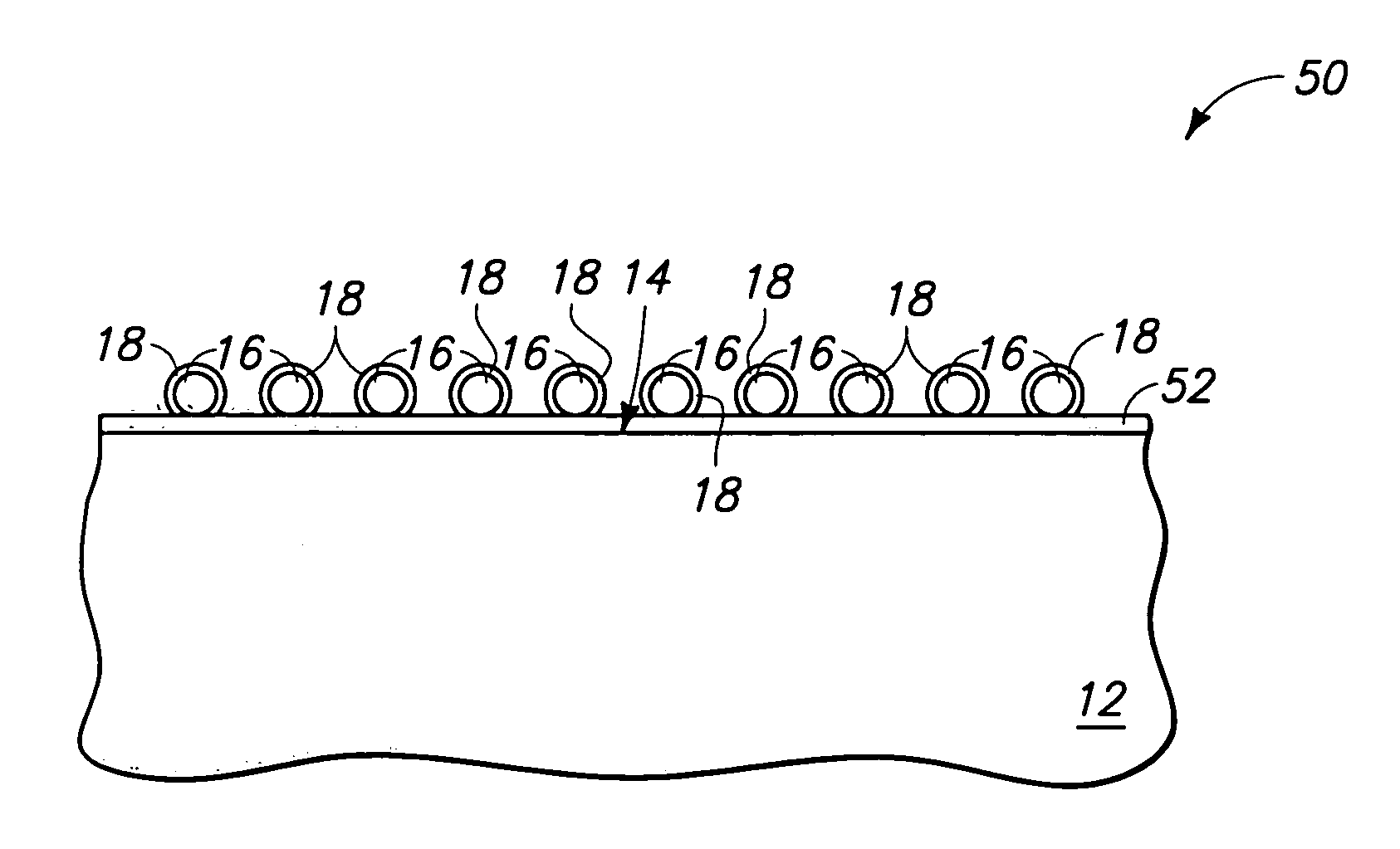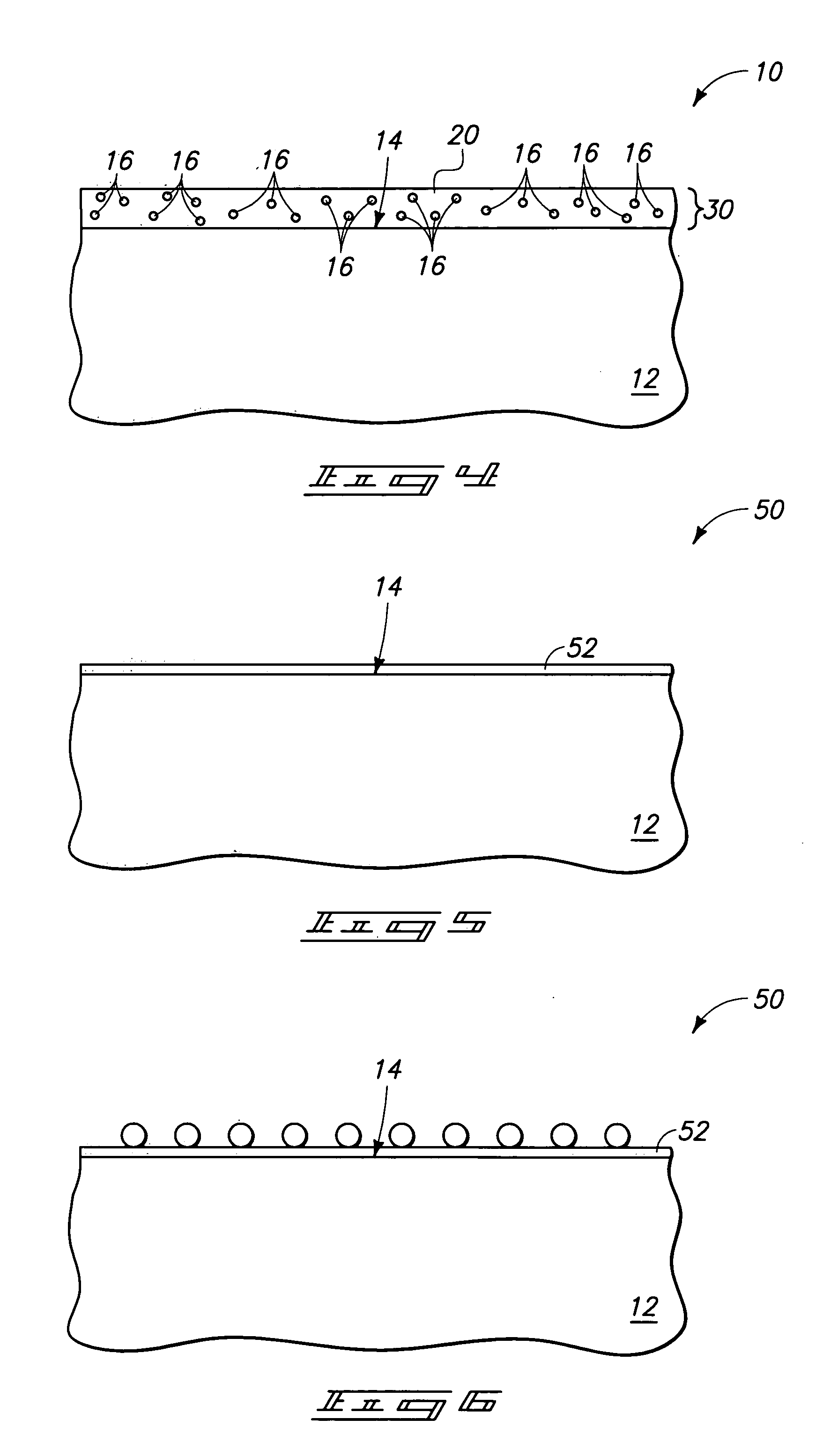Methods of forming particle-containing materials; and semiconductor constructions comprising particle-containing materials
a technology of particle-containing materials and semiconductors, which is applied in the direction of transportation and packaging, coatings, chemistry apparatuses and processes, etc., to achieve the effect of speeding up pressure saturation
- Summary
- Abstract
- Description
- Claims
- Application Information
AI Technical Summary
Benefits of technology
Problems solved by technology
Method used
Image
Examples
Embodiment Construction
[0028] This disclosure of the invention is submitted in furtherance of the constitutional purposes of the U.S. Patent Laws “to promote the progress of science and useful arts” (Article 1, Section 8).
[0029] The invention includes methods by which particles can be incorporated into layers during semiconductor device fabrication. In particular aspects, the particles can have a size from about 100 Å to about 10,000 Å, and in specific aspects the particles can be so-called nanoparticles. The particles can be formed remotely from a semiconductor substrate and then transferred to the substrate. This can allow the particles to be formed in environments particularly well-suited to particle fabrication, and can also allow avoidance of exposure of the semiconductor substrate to the environments utilized for particle formation. The conditions utilized to form the particles can thus be established to be economically highly suited for particle formation. Also, the conditions utilized to form the...
PUM
| Property | Measurement | Unit |
|---|---|---|
| dimension | aaaaa | aaaaa |
| electrically insulative | aaaaa | aaaaa |
| K dielectric | aaaaa | aaaaa |
Abstract
Description
Claims
Application Information
 Login to View More
Login to View More - R&D
- Intellectual Property
- Life Sciences
- Materials
- Tech Scout
- Unparalleled Data Quality
- Higher Quality Content
- 60% Fewer Hallucinations
Browse by: Latest US Patents, China's latest patents, Technical Efficacy Thesaurus, Application Domain, Technology Topic, Popular Technical Reports.
© 2025 PatSnap. All rights reserved.Legal|Privacy policy|Modern Slavery Act Transparency Statement|Sitemap|About US| Contact US: help@patsnap.com



